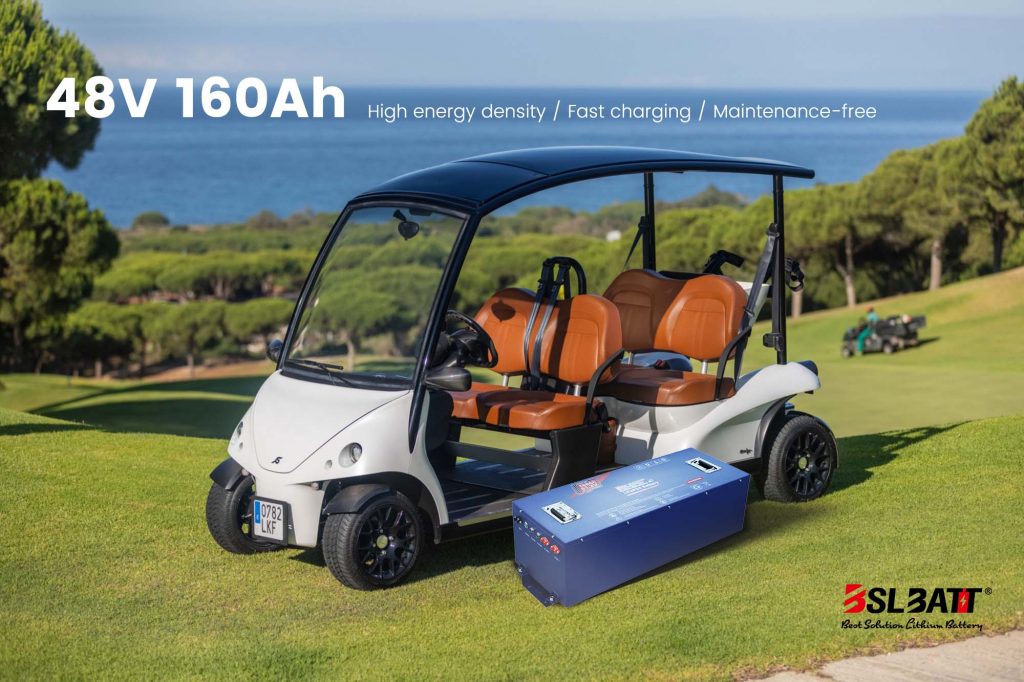
- China
- English
- Françai
- Español
- Deutsch
- Română
- العربية
- 한국어
- 日本語
- Italiano
- Português
- Gaeilge
- Dansk
- Čeština
- Русский
- Afrikaans
- Euskara
- Català
- Esperanto
- हिन्दी
- Ελληνικά
- Bahasa Melayu
- Polski
- Српски
- Kiswahili
- ภาษาไทย
- Tiếng Việt
- Türkçe
- Svenska
- Cymraeg
- Slovenčina
- Latviešu
- Malti
- Magyar
- Galego
- ગુજરાતી
- Eesti Keel
- বাংলা
- Shqip
- беларуская мова
- Nederlands
- Tagalog
- ქართული
- Íslenska
- Kreyòl Ayisyen
- Lietuvių
- Norsk
- slovenščina
- தமிழ்
- Українська
- ײִדיש
- اردو
- తెలుగు
- فارسی
- македонски
- ಕನ್ನಡ
- Bahasa Indonesia
- עברית
- Suomi
- Hrvatski
- Български
- Azerbaijani

Industry Application
Product Type
LEAD-ACID VS LITHIUM BATTERIES: WHICH ARE BEST FOR SOLAR?
|
|
||||||||||||||||||||||||||||||
| Depth of Discharge | up to 100% | |||
| Operating Efficiency | 98% | |||
| Operating Temperature | -4 to 140°F (-20 to 60°C) | |||
| Charge Temperature | 32 to 120°F (0 to 49°C) (note, if installed ouside in cold environment, insulate the battery box to keep above freezing) | |||
| Self Discharge Rate | Less than 1% loss/ month | |||
| Cycle Life | 10,000 (80% DoD) (that’s over 27 years!) | |||
Lithium-Ion Batteries are distinctly different
Lithium-ion batteries are distinctly different from their lead-acid counterparts. They also provide more advantages in terms of performance and efficiency.
However they are not the perfect solution, yet, but they are popular for several reasons. To help you get a better understanding of lithium-ion batteries and why they usually cost a little more.
Here is a breakdown of the pros and cons.
Pros
Lightweight and Small
If you were to compare the average lithium-ion batteries with an average lead-acid battery, you’ll notice the former is about one third the weight of the latter. In terms of volume, lithium-ion models are half the size. And given the purpose of the battery along with the fact that you’ll be storing it for a very long time, the smaller the better.
A Sleek Design
One of the first things you’ll notice is how sleek the designs of lithium-ion batteries are. Unlike lead-acid batteries, you won’t have to worry too much about the appearance.
More Efficiency
For quality lithium batteries, the discharge and charging are as close to 100% as you are going to get. This means they can discharge and charge completely without losing amps.
Increased Cycles
Batteries can only go through a certain amount of charging and discharging cycles before they lose capacity and efficiency.
With lithium, you’ll be getting the most possible cycles, averaging about 5000 plus cycles, depending on the battery you choose.
Consistent Discharge Voltage
When lead-acid batteries discharge, the voltage becomes inconsistent. But the voltage of lithium-ion batteries stays consistent throughout the discharge process, making it much safer to use in terms of protecting electric components.
Competitive Pricing
Yes, the initial investment for a lithium battery is more than the lead-acid alternative. But when you take the lifespan, ability, and performance into consideration, lead-acid batteries will probably end up costing you more in the long run.
Low Maintenance
Chances are you’ll forget the battery is there because it requires very little maintenance.
More Environmentally Friendly
Lithium-ion batteries are much more environmentally friendly, meaning you leave a smaller carbon footprint.
Cons
As mentioned earlier, lithium-ion is not the perfect solution. It has some drawbacks you want to consider first, and they include:
Cost
While you save money in the long run, it doesn’t make the initial investment any less intimidating.
Overheating
You don’t want a lithium battery overheating, seeing as it will degrade the efficiency.
HOW’S IT COMPARE TO GOOD OL’ LEAD ACID BATTERIES?
While the BSLBATT lithium batteries are more expensive when comparing directly Wh to Wh with lead-acid batteries, if you compare the cost per cycle over the life of the battery, you’ll see the system cost for the lithium batteries can be less than lead-acid. In fact, they can save you money versus competing batteries. How can that be, you may ask?
Let’s compare a classic in the off-grid solar world, the Trojan T-105 flooded lead-acid battery. It’s 6V, 225Ah (amp-hour) for a total of 1350Wh (watt-hour). It costs about $160. We’ll compare that with the BSLBATT 1310Wh 12V, 102.4Ah, that costs about $1750. I know, that’s 10x more for almost the same capacity battery, but stick with me for a minute.
A typical lead-acid battery does not like to be deeply cycled, charged and discharged. The 50% depth of discharge (DoD) we commonly hear about is the last resort, after 3 or 4 days of no sun. You do not want to discharge the battery that deeply daily. If you do, the battery may only last a few years. As you can see in the graph below, using 50% of the Trojan T-105 battery, a workhorse of off-grid solar systems, each day would result in about 1200 cycles. But if you only use 20% of the battery each day, you can more than double its life to 3000 cycles.
5 Key Differences Between Lead-acid and Lithium Batteries
1. Cycle life
When you discharge a battery (use it to power your appliances), then charge it back up with your panels, which is referred to as one charge cycle. We measure the lifespan of batteries not in terms of years, but rather how many cycles they can handle before they expire.
Think of it like putting mileage on a car. When you evaluate the condition of a used car, mileage matters a lot more than the year it was produced.
The same goes for batteries and the number of times they’ve been cycled. A sealed lead-acid battery at a vacation home may go through 100 cycles in 4 years, whereas the same battery might go through 300+ cycles in one year at a full-time residence. The one that has gone through 100 cycles is in much better shape.
Cycle life is also a function of the depth of discharge (how much capacity you use before recharging a battery). Deeper discharges put more stress on the battery, which shortens its cycle life.
2. Depth of Discharge
Discharge depth refers to how much overall capacity is used before recharging the battery. For example, if you use a quarter of your battery’s capacity, the depth of discharge would be 25%.
Batteries don’t discharge fully when you use them. Instead, they have a recommended depth of discharge: how much can be used before they should be refilled.
Lead-acid batteries should only be run to 50% depth of discharge. Beyond that point, you risk negatively affecting their lifespan.
In contrast, lithium batteries can handle deep discharges of 80% or more. This essentially means they feature a higher usable capacity.
3. Efficiency
Lithium batteries are more efficient. This means that more of your solar power is stored and used.
As an example, lead acid batteries are only 80-85% efficient depending on the model and condition. That means if you have 1,000 watts of solar coming into the batteries, there are only 800-850 watts available after the charging and discharging process.
Lithium batteries are more than 95% efficient. In the same example, you’d have over 950 watts of power available.
Higher efficiency means your batteries charge faster. Depending on the configuration of your system, it could also mean you buying fewer solar panels, less battery capacity and a smaller backup generator.
4. Charge Rate
With higher efficiency also comes a faster rate of charge for lithium batteries. They can handle a higher amperage from the charger, which means they can be refilled much faster than lead-acid.
We express charge rate as a fraction, such as C/5, where C = the capacity of the battery in amp hours (Ah). So a 430 Ah battery charging at a rate of C/5 would receive 86 charging amps (430/5).
Lead-acid batteries are limited in how much charge current they can handle, mainly because they will overheat if you charge them too quickly. In addition, the charge rate gets significantly slower as you approach full capacity.
Lead acid batteries can charge around C/5 during the bulk phase (up to 85% capacity). After that, the battery charger automatically slows down to top off the batteries. This means lead acid batteries take longer to charge, in some cases more than 2x as long as a Lithium alternative.
5. Energy Density
The lead-acid batteries featured in the comparison above both weigh around 125 pounds. The lithium battery checks in at 192 pounds.
Most installers can handle the extra weight, but DIYers might find the lithium batteries more challenging to install. It’s wise to enlist some help lifting and moving them into place.
But that comes with a tradeoff: the energy density of lithium batteries is much higher than lead-acid, meaning they fit more storage capacity into less space.
As you can see in the example, it takes two lithium batteries to power a 5.13 kW system, but you’d need 8 lead-acid batteries to do the same job. When you take the size of the entire battery bank into account, lithium weighs less than half as much.
This can be a real benefit if you need to get creative with how you mount your battery bank. If you are hanging an enclosure on the wall or hiding it in a closet, the improved energy density helps your lithium battery bank fit into tighter spaces.
Our Range of Options
If you have a look at the range of lithium-ion batteries available here at BSLBATT, you’ll notice there is a comfortable price range, and we only supply high-quality merchandise.
Finding the right one for you is simply a matter of assessing your needs, followed by looking a little closer at the specs and features of our range.
A Guide to Choosing the Best 48V Lithium Golf Cart Battery
Would it be worth investing in a 48V ...
10 Exciting Ways To Use Your 12V Lithium Batteries
Back in 2016 when BSLBATT first began designing what would become the first drop-in replacemen...
BSLBATT Battery Company Receives Bulk Orders from North American Customers
BSLBATT®, a China Forklift battery manufacturer specializing in the material handling indust...
Fun Find Friday: BSLBATT Battery is coming to another great LogiMAT 2022
MEET US! VETTER’S EXHIBITION YEAR 2022! LogiMAT in Stuttgart: SMART – SUSTAINABLE – SAF...
Looking for new Distributors and Dealers for BSL Lithium Batteries
BSLBATT battery is a fast-paced, high-growth (200% YoY ) hi-tech company that is leading the a...
BSLBATT to Participate at MODEX 2022 on March 28-31 in Atlanta, GA
BSLBATT is one of the largest developers, manufacturers, and integrators of lithium-ion batter...
What makes the BSLBATT the Superior Lithium Battery for your Motive Power needs?
Electric forklift and Floor Cleaning Machines owners who seek the ultimate performance will fi...




























